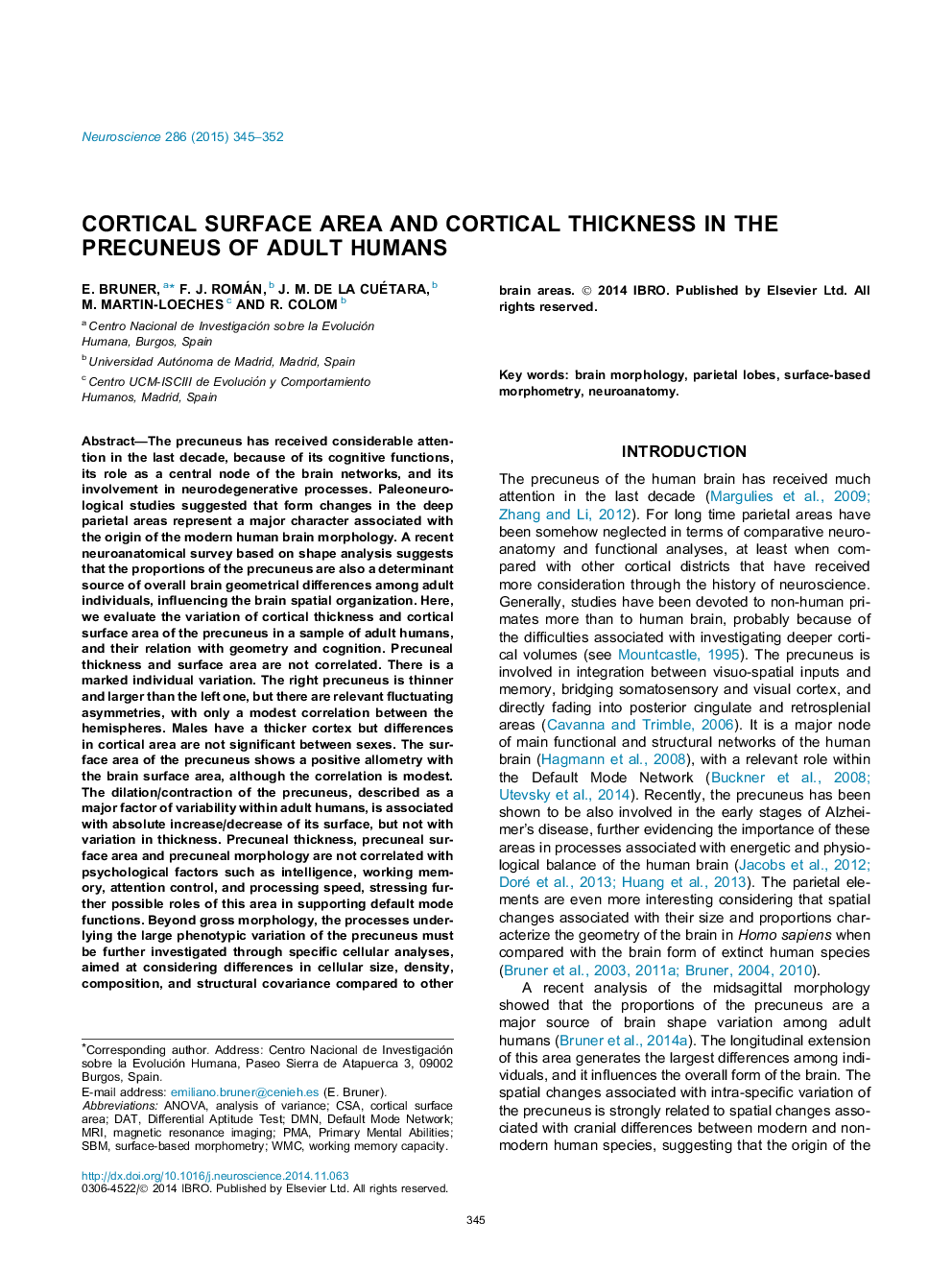| Article ID | Journal | Published Year | Pages | File Type |
|---|---|---|---|---|
| 6273073 | Neuroscience | 2015 | 8 Pages |
Abstract
The precuneus has received considerable attention in the last decade, because of its cognitive functions, its role as a central node of the brain networks, and its involvement in neurodegenerative processes. Paleoneurological studies suggested that form changes in the deep parietal areas represent a major character associated with the origin of the modern human brain morphology. A recent neuroanatomical survey based on shape analysis suggests that the proportions of the precuneus are also a determinant source of overall brain geometrical differences among adult individuals, influencing the brain spatial organization. Here, we evaluate the variation of cortical thickness and cortical surface area of the precuneus in a sample of adult humans, and their relation with geometry and cognition. Precuneal thickness and surface area are not correlated. There is a marked individual variation. The right precuneus is thinner and larger than the left one, but there are relevant fluctuating asymmetries, with only a modest correlation between the hemispheres. Males have a thicker cortex but differences in cortical area are not significant between sexes. The surface area of the precuneus shows a positive allometry with the brain surface area, although the correlation is modest. The dilation/contraction of the precuneus, described as a major factor of variability within adult humans, is associated with absolute increase/decrease of its surface, but not with variation in thickness. Precuneal thickness, precuneal surface area and precuneal morphology are not correlated with psychological factors such as intelligence, working memory, attention control, and processing speed, stressing further possible roles of this area in supporting default mode functions. Beyond gross morphology, the processes underlying the large phenotypic variation of the precuneus must be further investigated through specific cellular analyses, aimed at considering differences in cellular size, density, composition, and structural covariance compared to other brain areas.
Keywords
Related Topics
Life Sciences
Neuroscience
Neuroscience (General)
Authors
E. Bruner, F.J. Román, J.M. de la Cuétara, M. Martin-Loeches, R. Colom,
